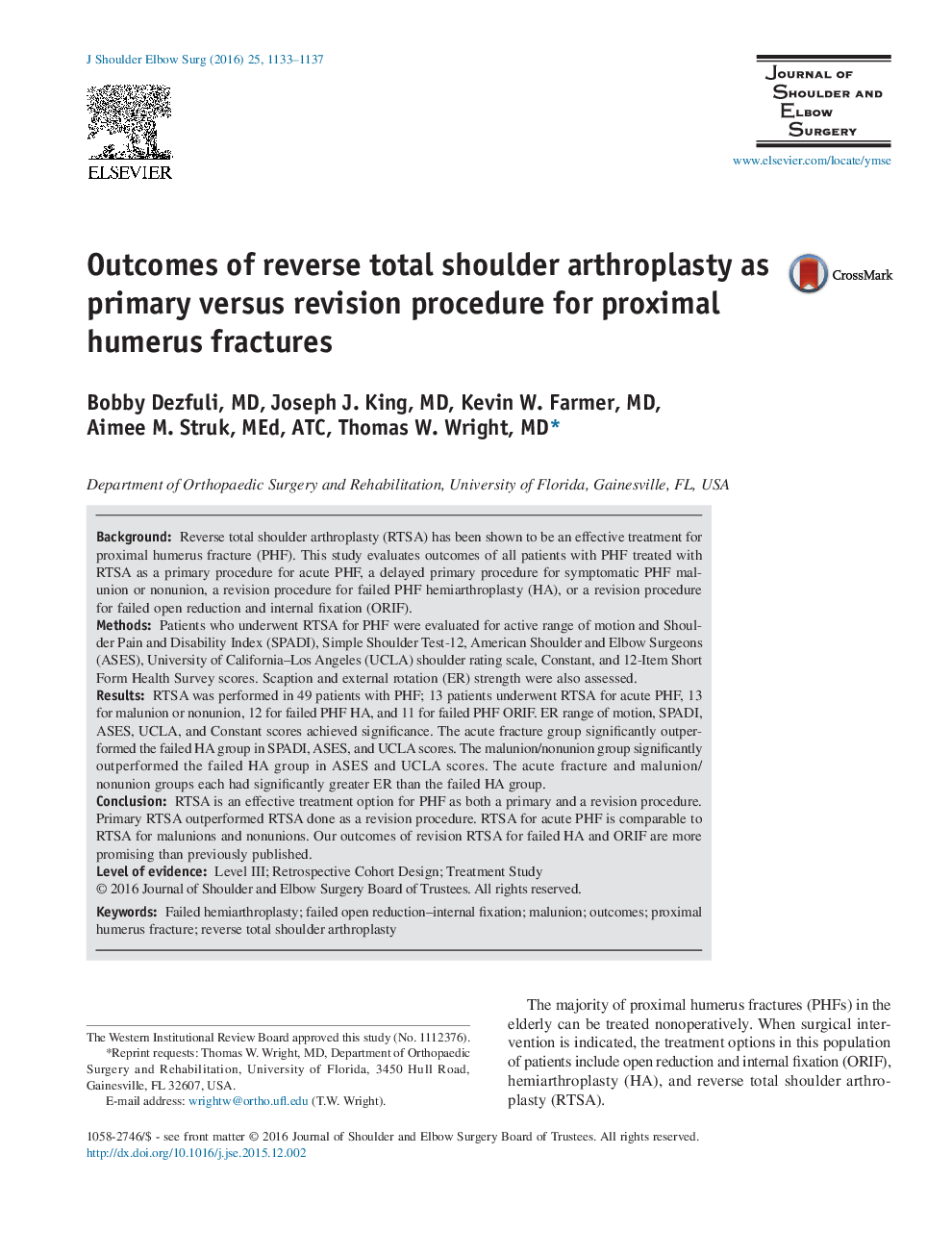| Article ID | Journal | Published Year | Pages | File Type |
|---|---|---|---|---|
| 4072977 | Journal of Shoulder and Elbow Surgery | 2016 | 5 Pages |
BackgroundReverse total shoulder arthroplasty (RTSA) has been shown to be an effective treatment for proximal humerus fracture (PHF). This study evaluates outcomes of all patients with PHF treated with RTSA as a primary procedure for acute PHF, a delayed primary procedure for symptomatic PHF malunion or nonunion, a revision procedure for failed PHF hemiarthroplasty (HA), or a revision procedure for failed open reduction and internal fixation (ORIF).MethodsPatients who underwent RTSA for PHF were evaluated for active range of motion and Shoulder Pain and Disability Index (SPADI), Simple Shoulder Test-12, American Shoulder and Elbow Surgeons (ASES), University of California–Los Angeles (UCLA) shoulder rating scale, Constant, and 12-Item Short Form Health Survey scores. Scaption and external rotation (ER) strength were also assessed.ResultsRTSA was performed in 49 patients with PHF; 13 patients underwent RTSA for acute PHF, 13 for malunion or nonunion, 12 for failed PHF HA, and 11 for failed PHF ORIF. ER range of motion, SPADI, ASES, UCLA, and Constant scores achieved significance. The acute fracture group significantly outperformed the failed HA group in SPADI, ASES, and UCLA scores. The malunion/nonunion group significantly outperformed the failed HA group in ASES and UCLA scores. The acute fracture and malunion/nonunion groups each had significantly greater ER than the failed HA group.ConclusionRTSA is an effective treatment option for PHF as both a primary and a revision procedure. Primary RTSA outperformed RTSA done as a revision procedure. RTSA for acute PHF is comparable to RTSA for malunions and nonunions. Our outcomes of revision RTSA for failed HA and ORIF are more promising than previously published.
